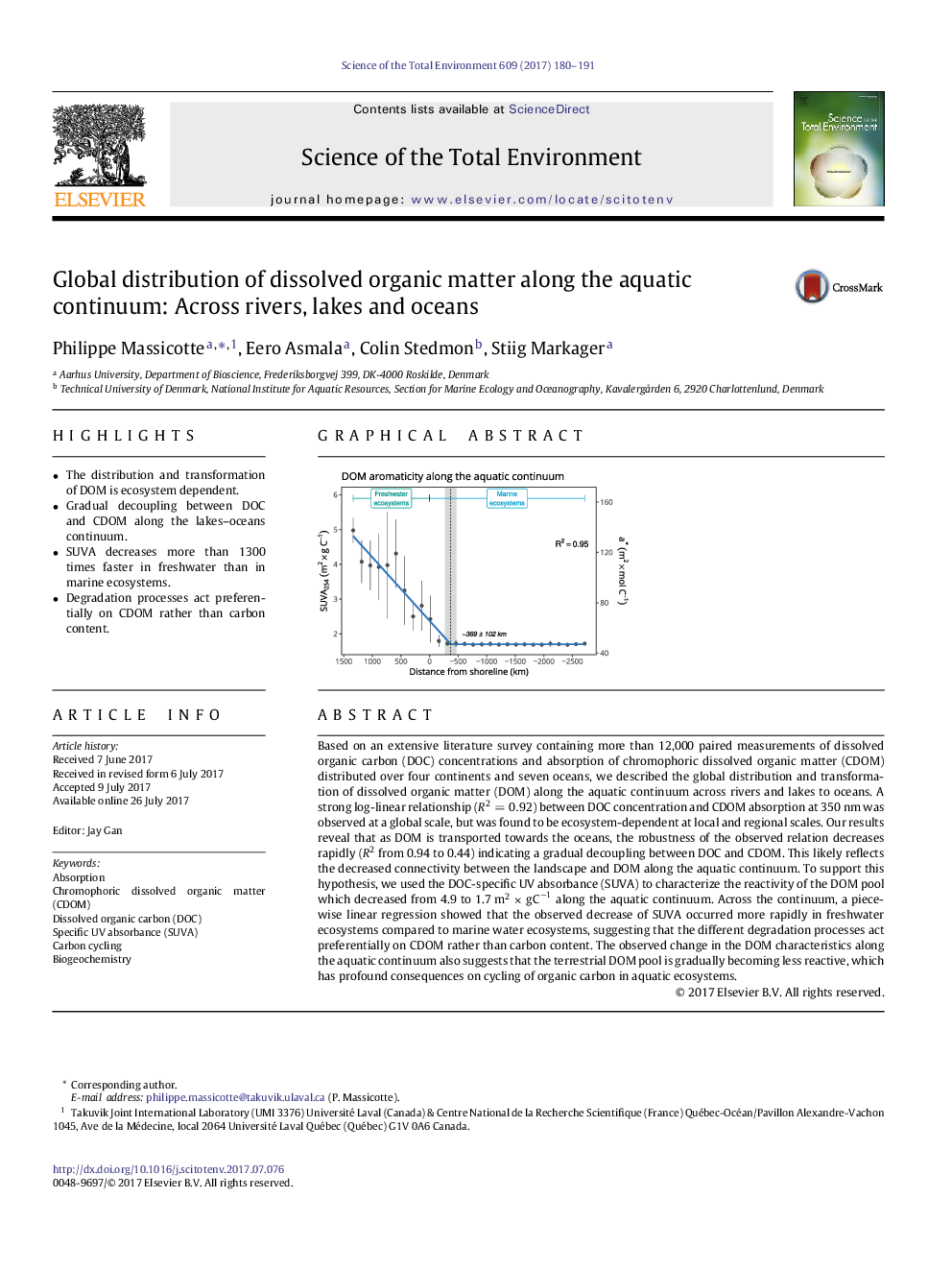| کد مقاله | کد نشریه | سال انتشار | مقاله انگلیسی | نسخه تمام متن |
|---|---|---|---|---|
| 5750743 | 1619693 | 2017 | 12 صفحه PDF | دانلود رایگان |
- The distribution and transformation of DOM is ecosystem dependent.
- Gradual decoupling between DOC and CDOM along the lakes-oceans continuum.
- SUVA decreases more than 1300 times faster in freshwater than in marine ecosystems.
- Degradation processes act preferentially on CDOM rather than carbon content.
Based on an extensive literature survey containing more than 12,000 paired measurements of dissolved organic carbon (DOC) concentrations and absorption of chromophoric dissolved organic matter (CDOM) distributed over four continents and seven oceans, we described the global distribution and transformation of dissolved organic matter (DOM) along the aquatic continuum across rivers and lakes to oceans. A strong log-linear relationship (R2Â =Â 0.92) between DOC concentration and CDOM absorption at 350Â nm was observed at a global scale, but was found to be ecosystem-dependent at local and regional scales. Our results reveal that as DOM is transported towards the oceans, the robustness of the observed relation decreases rapidly (R2 from 0.94 to 0.44) indicating a gradual decoupling between DOC and CDOM. This likely reflects the decreased connectivity between the landscape and DOM along the aquatic continuum. To support this hypothesis, we used the DOC-specific UV absorbance (SUVA) to characterize the reactivity of the DOM pool which decreased from 4.9 to 1.7Â m2 Ã gCÂ â1 along the aquatic continuum. Across the continuum, a piecewise linear regression showed that the observed decrease of SUVA occurred more rapidly in freshwater ecosystems compared to marine water ecosystems, suggesting that the different degradation processes act preferentially on CDOM rather than carbon content. The observed change in the DOM characteristics along the aquatic continuum also suggests that the terrestrial DOM pool is gradually becoming less reactive, which has profound consequences on cycling of organic carbon in aquatic ecosystems.
Graphical Abstract148
Journal: Science of The Total Environment - Volume 609, 31 December 2017, Pages 180-191
